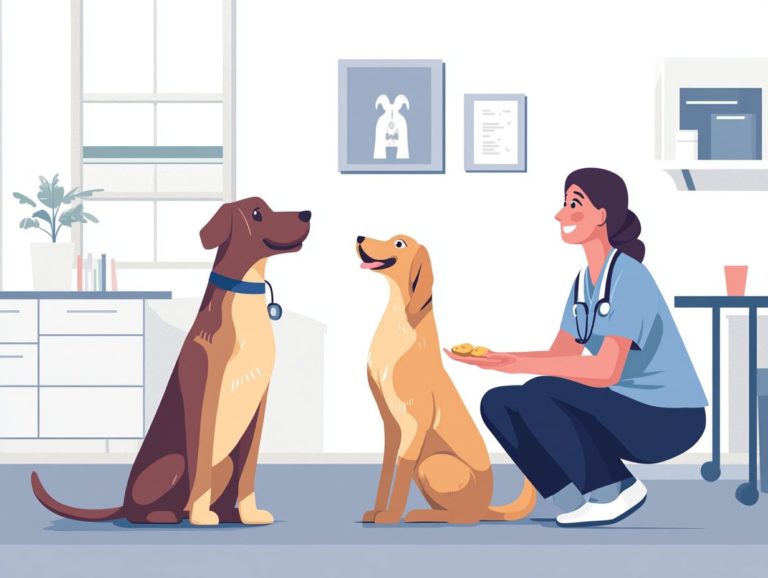Understanding the Timeline of Pet Anxiety Treatment
Pet anxiety is a widespread concern that impacts many furry companions. It often leaves you feeling somewhat powerless as you witness their distress.
This article delves into the nature of pet anxiety, guiding you through how to recognize its symptoms and explore the various treatment options available. We will discuss common causes, behavioral symptoms, the treatment timeline, and what to expect at each stage. You’ll also find insights on the factors that may influence your pet’s progress along the way.
Long-term management strategies will empower you to help your pet lead a happier, calmer life!
Join us as we navigate the intricacies of pet anxiety, equipping you with the knowledge needed to support your cherished companion.
Contents
Key Takeaways:
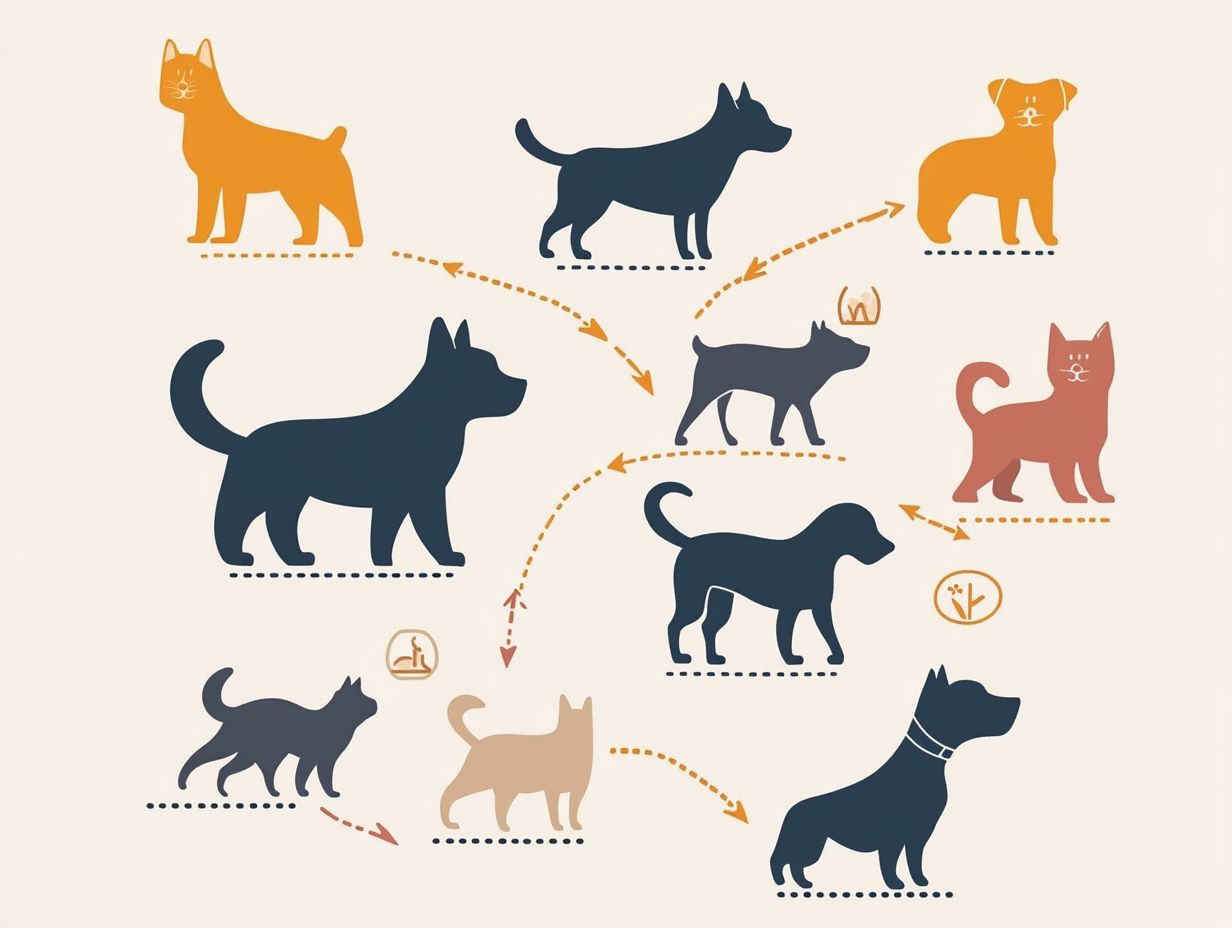
- Identify symptoms of pet anxiety, such as excessive barking or destructive behavior, to determine if treatment is needed.
- Treatment for pet anxiety can vary and may take time to see progress, including behavior modification, medication, and natural remedies.
- The treatment timeline for pet anxiety can be affected by individual differences and the owner’s commitment to long-term management strategies.
What is Pet Anxiety?
Pet anxiety is a prevalent concern that affects many dogs. It reveals itself through various behavioral and physical symptoms such as excessive barking, trembling, and even aggression.
This issue can be classified into several types, including separation anxiety, fear-related anxiety, thunderstorm phobia, and those linked to cognitive dysfunction syndrome. Understanding the underlying causes is essential for effective treatment and prevention.
Many dog owners struggle to identify the specific anxiety disorder their beloved pet might be facing.
Defining and Identifying Symptoms
Recognizing the symptoms of dog anxiety is essential for you as a dog owner. These signs can manifest both behaviorally and physically, pointing to an underlying anxiety disorder.
Behavioral signs often include excessive barking and aggressive behavior, which may act as a plea for help, alongside destructive behaviors such as chewing furniture or digging, indicating feelings of distress.
You might also notice pacing a repetitive motion that can signal anxiety.
On the physical side, symptoms like trembling, hiding, or seeking constant attention can further complicate the situation. In cases of separation anxiety, you may observe your dog becoming unusually clingy before you leave or displaying panic as soon as you depart.
Cognitive dysfunction syndrome can complicate matters. Symptoms can include disorientation, disrupted sleep patterns, and changes in how your dog interacts. It s essential to consult a veterinary behaviorist for guidance.
Recognizing these various indicators empowers you to seek appropriate interventions to support your furry friend.
Treating Pet Anxiety
Addressing pet anxiety requires a carefully crafted treatment plan that may encompass a variety of approaches. This can include anxiety medications, behavioral therapies, and alternative solutions like CBD oil and Innovet products.
By considering a holistic range of options, including treatments like SSRIs such as fluoxetine or clomipramine, you can create an effective strategy tailored to your pet’s specific needs.
Start today! Consult your vet to find the best solutions for your furry friend.
Options for Treatment
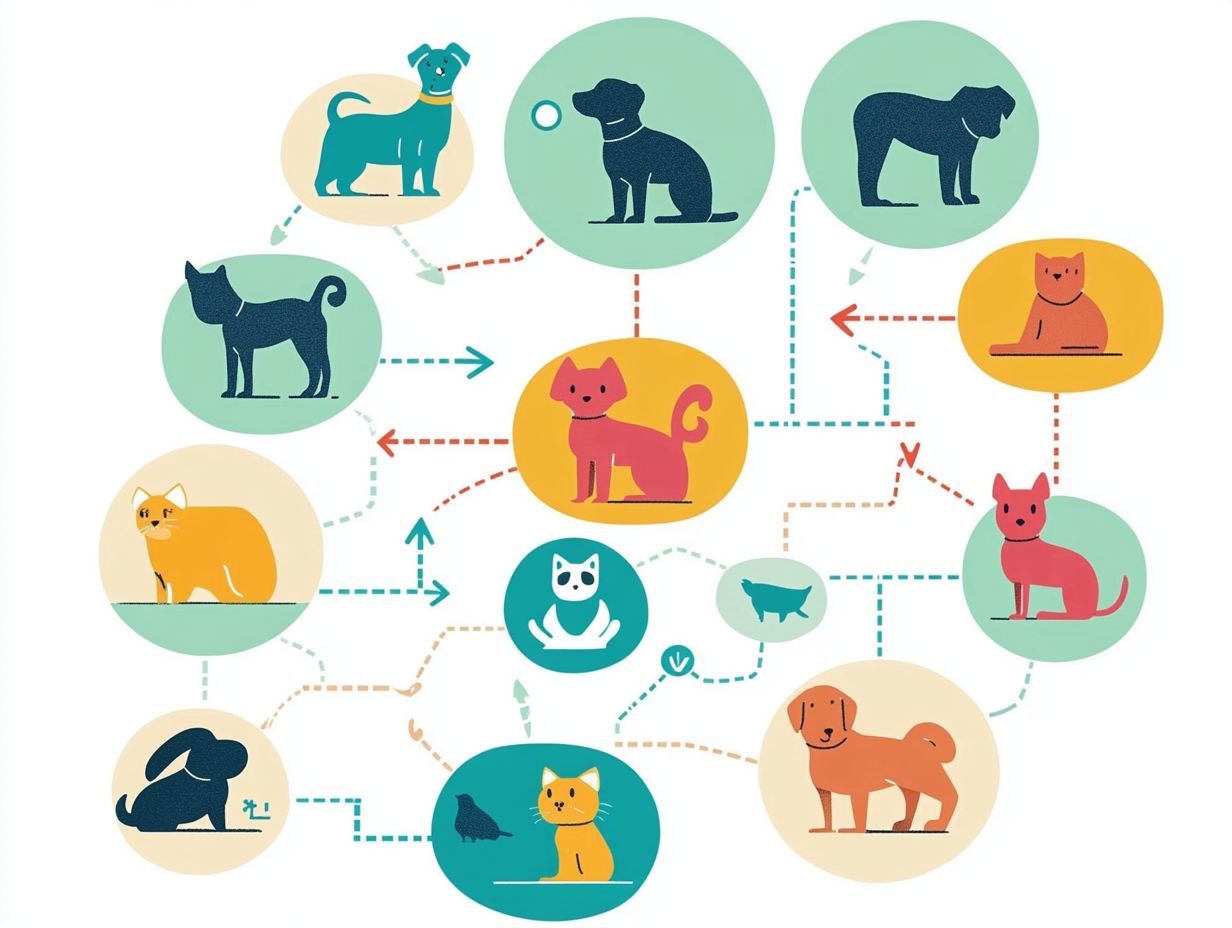
You have a variety of options at your disposal for treating pet anxiety. These range from traditional anxiety medications to behavioral therapies that involve the expertise of a professional dog trainer.
Many pet owners are also looking into alternative treatments, such as CBD oil and products like Innovet. These can offer additional relief. A comprehensive treatment plan often combines these methods, tailored specifically to the unique needs of each pet. This ensures a holistic approach to their well-being.
Collaboration with veterinarians and professional dog trainers is essential in this journey. They can recommend the most effective medications, monitor any side effects, and suggest suitable behavioral therapies.
By working closely with trainers, you can reinforce positive behaviors and minimize anxiety triggers. This ultimately leads to a happier and more balanced life for your anxious pets.
The Timeline of Pet Anxiety Treatment
The timeline for treating pet anxiety can differ greatly. This depends on the specific anxiety disorder, the treatment plan you implement, and how your dog reacts to various interventions.
This process typically involves multiple stages of treatment, including desensitization training and counterconditioning techniques. Each stage is tailored to your pet’s unique needs.
Stages of Treatment and Expected Progress
Treatment for pet anxiety typically unfolds in several stages. Each stage is carefully created to focus on key parts of the anxiety disorder, with expected progress varying from one dog to another.
To begin, a comprehensive assessment is essential. This usually involves a veterinarian or a certified animal behaviorist who will help pinpoint the specific triggers and symptoms your dog exhibits.
Once the diagnosis is established, a tailored treatment plan is crafted. This plan incorporates a variety of strategies, such as behavioral modification techniques, environmental adjustments, and, if deemed necessary, medication.
The implementation of this plan may also include ongoing training sessions. Here, your canine companion receives consistent reinforcement and encouragement.
Throughout the treatment process, regular evaluations will be conducted to monitor progress and make necessary adjustments. Factors like your pet s age, the severity of anxiety, and its environmental circumstances are taken into account. This careful approach enhances the likelihood of achieving successful outcomes.
Factors Affecting Treatment Timeline
Several factors can influence the treatment timeline for your pet’s anxiety. These include health conditions and individual differences.
Consider factors such as the common causes behind their anxiety disorder and the effectiveness of the treatment strategies you choose.
Individual Pet Differences and Other Considerations
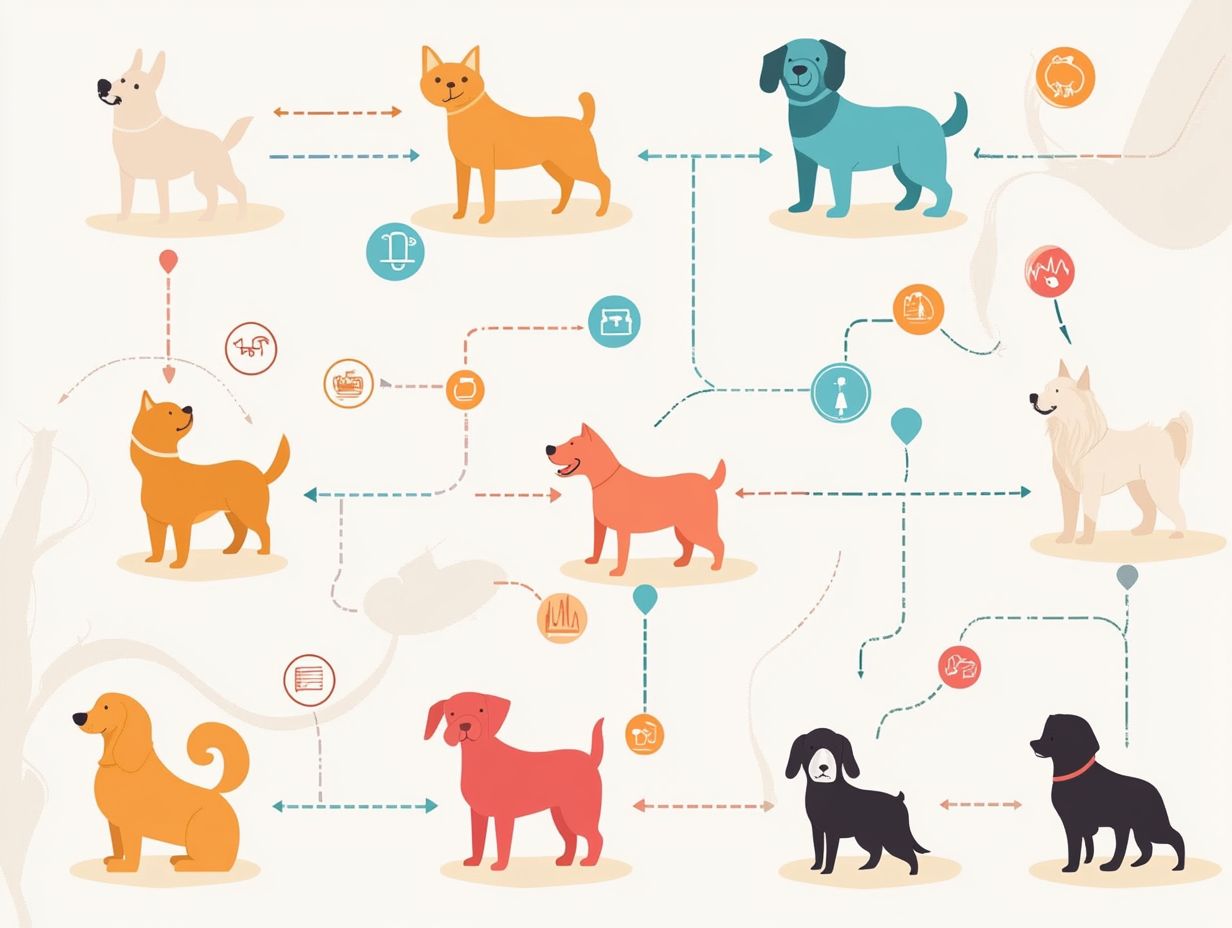
Understanding the unique differences among pets is essential for effectively addressing pet anxiety. These variations can significantly influence both the treatment plan and the overall timeline.
Factors such as breed, age, and individual history play a critical role in determining how your pet responds to anxiety and its associated treatments.
For example, certain breeds may be genetically predisposed to anxiety. Additionally, a pet s past experiences be it traumatic events or insufficient socialization can greatly shape their behavior and emotional state.
Age also comes into play; younger pets often exhibit different coping mechanisms compared to their older counterparts. This underscores the need for tailored treatment strategies, such as those for canine compulsive disorder, that consider these distinctive characteristics. Ultimately, this paves the way for more successful outcomes and enhanced well-being for your beloved furry friend.
Managing Pet Anxiety Long-Term
Managing your pet’s anxiety over the long term necessitates a proactive strategy. This strategy should prioritize prevention, continuous training, and routine adjustments to their treatment plan.
Working with a professional dog trainer makes this process more effective. They can provide the expertise needed to navigate these challenges and help implement effective anxiety prevention strategies.
Start now to build a calmer, happier future for your pet!
Preventive Measures and Strategies
Implementing preventive measures and strategies is crucial for you as a dog owner to effectively manage your pet’s anxiety and reduce the risk of anxiety disorders down the line.
Utilizing techniques such as desensitization training and counterconditioning teaches your dog to feel comfortable around things that scare them. This allows you to gradually expose your dog to anxiety-inducing stimuli in a controlled way, helping them adapt more comfortably over time.
Establishing a consistent daily routine enhances your dog s sense of security. Predictability in their environment can significantly alleviate stress and anxiety.
Creating a safe space filled with comforting items can act as a refuge during overwhelming situations, particularly during thunderstorms or visits to dog parks.
Start using these strategies today to create a peaceful home for your furry friend! By proactively integrating these strategies into your daily care regimen, you can foster a more peaceful and stable atmosphere, ultimately benefiting your furry companion s mental well-being.
Frequently Asked Questions
What is the typical timeline for treating pet anxiety?
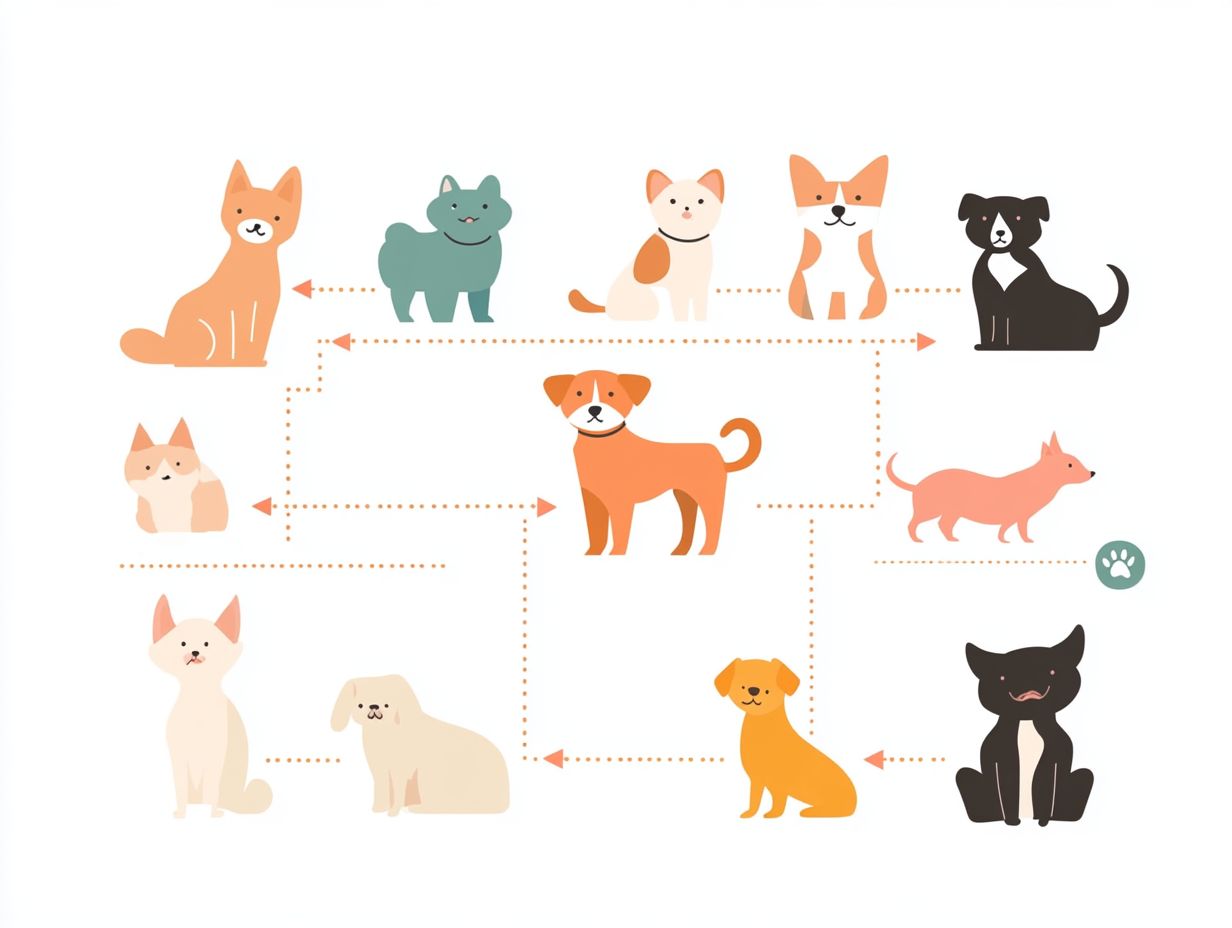
The timeline for treating dog anxiety can vary depending on the severity of the anxiety and the individual pet. However, on average, it can take anywhere from a few weeks to several months to see significant improvement in your pet’s anxiety.
What are the different stages in the timeline of pet anxiety treatment?
The timeline of pet anxiety treatment usually includes three stages: evaluation and diagnosis, implementing treatment, and maintenance and monitoring, often guided by a veterinary behaviorist. During the evaluation stage, your pet will be assessed for any underlying causes of anxiety. The treatment stage involves implementing a plan, which may include medication, behavior modification, and/or therapy. The maintenance stage focuses on long-term management and monitoring of your pet’s anxiety.
How long does it take to see results from treatment for pet anxiety?
The timeline for seeing results from pet anxiety treatment can vary. Some pets may show improvement within a few weeks, while others may take several months. It’s important to be patient and consistent with the treatment plan to see the best results.
Can pet anxiety be cured with treatment?
While pet anxiety can be managed and improved with treatment, it cannot be completely cured. Your pet may always be prone to anxiety disorders, but with proper treatment and management, including the use of anxiety medications like SSRIs, clomipramine, or fluoxetine, they can live a happy and healthy life.
What can affect the timeline of pet anxiety treatment?
Several factors can impact the timeline of pet anxiety treatment. These include the severity of the anxiety, the effectiveness of the treatment plan, and any underlying health conditions or behavioral symptoms. It’s essential to work closely with your veterinarian or a veterinary behaviorist to adjust the treatment plan as needed for the best results.
What can I do to help my pet’s anxiety during the treatment timeline?
There are several ways to support your pet during their anxiety treatment. Create a calm and safe space, stick to the treatment plan, and ensure your pet gets plenty of exercise and mental activities.
Show love and comfort to your pet during this tough time. Consider reaching out to a dog trainer for personalized help!
Visiting dog parks can also reduce anxiety and improve your dog’s body language. Explore products like Innovet or CBD oil for extra support.
Start implementing these tips today to help your furry friend feel more at ease!




